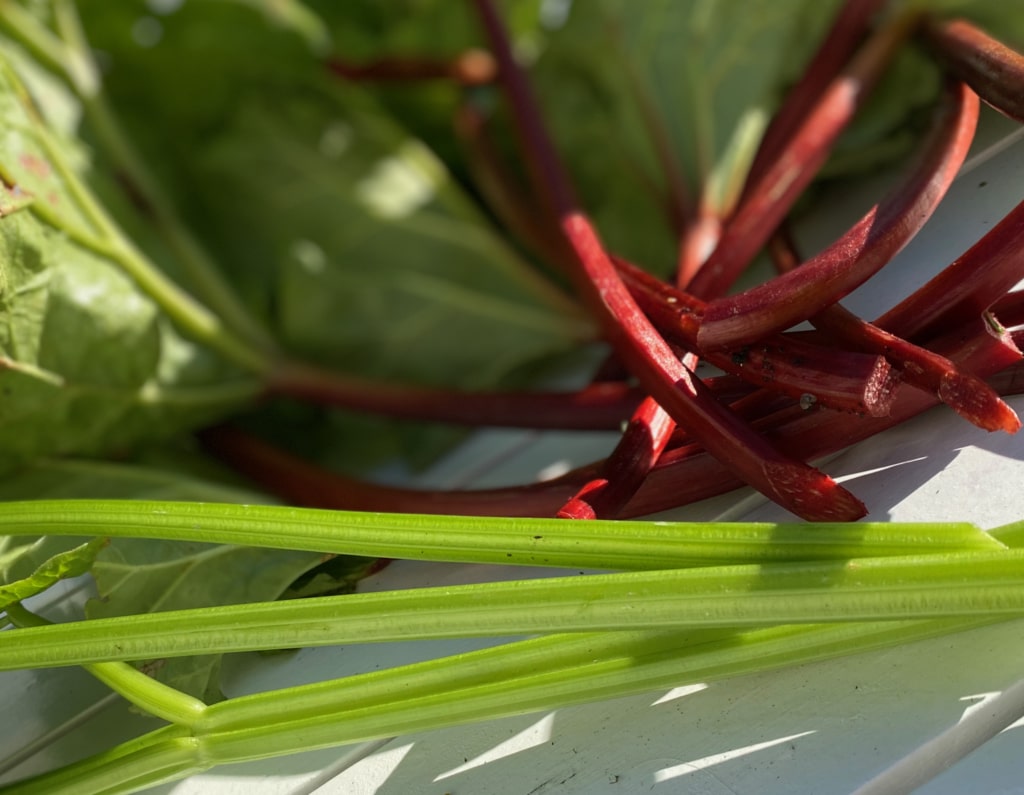
It’s snowing! Not much, but a thin veil of snow covers my backyard. It’s below frost in the city and weather is crazy up north. Snowstorm on the 28th of September. That’s early, even for Iceland.
Fortunately I’d already harvested the potatoes and rhubarb and the results are good! I’ve got no idea what will happen to the celery that’s left in the grow boxes. Nor do I know if the tomatoes will continue to grow in my greenhouse or if Rhapsody in Blue will be able to open her many buds. We’ll see.
On a day like this it’s nice to reflect on the summer and think about what I’ve learned.
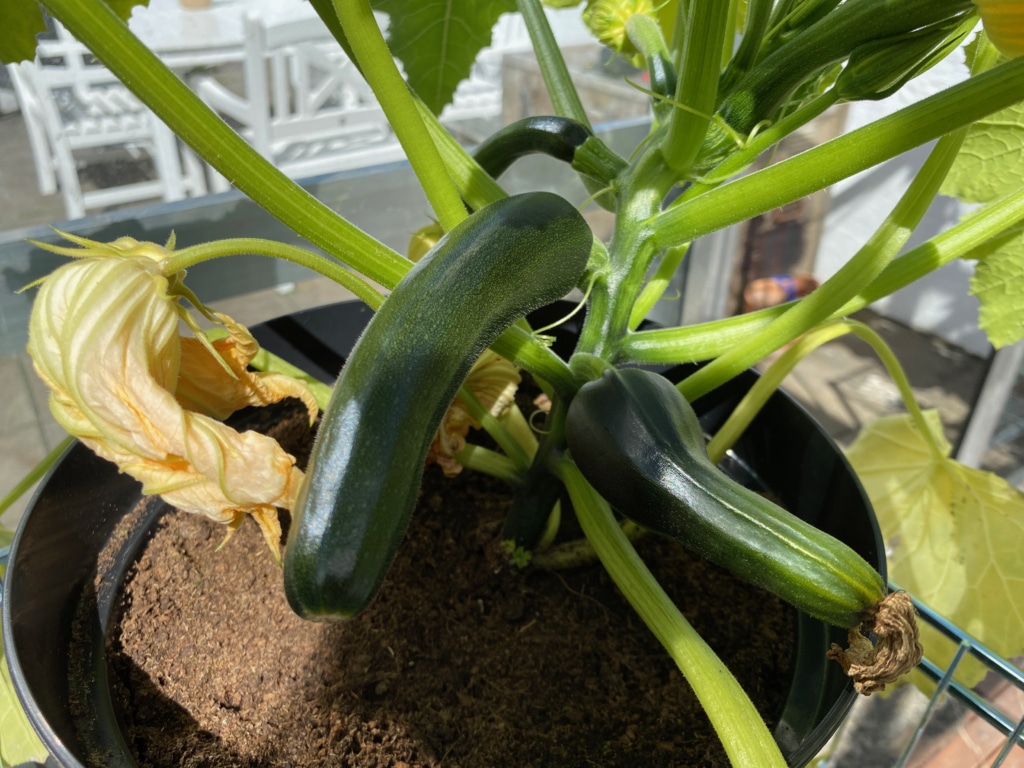
I realised rather late that the courgette needed to be hand pollinated. I can not rely on bees coming into the greenhouse often enough for that. I had to pollinate the female courgettes with the flowers of the male courgette. When I finally learned this it was pretty difficult because each time the female courgette was in bloom there were no male courgettes on the plant. But as soon as the female flower had fallen off all of a sudden 5 male courgettes came along. Reminded me of past dating history 🙂
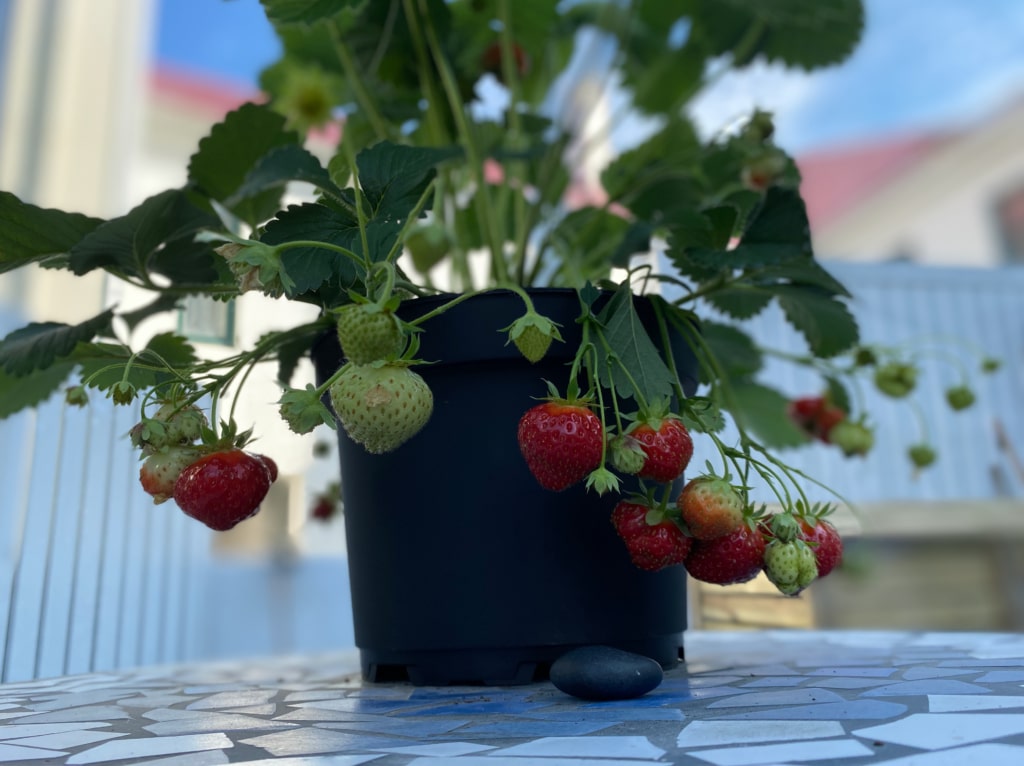
I also learned it’s important to cut the runners off the strawberry plants regularly. That is if you’re not going to use them to grow new plants. Otherwise the runners get all the nutrition and leave nothing for the plant to produce berries. When I was taking photos this summer I was mainly admiring my gorgeous plants so completely forgot to take a photo of the runners. However, I found a nice drawing online that explains it well.
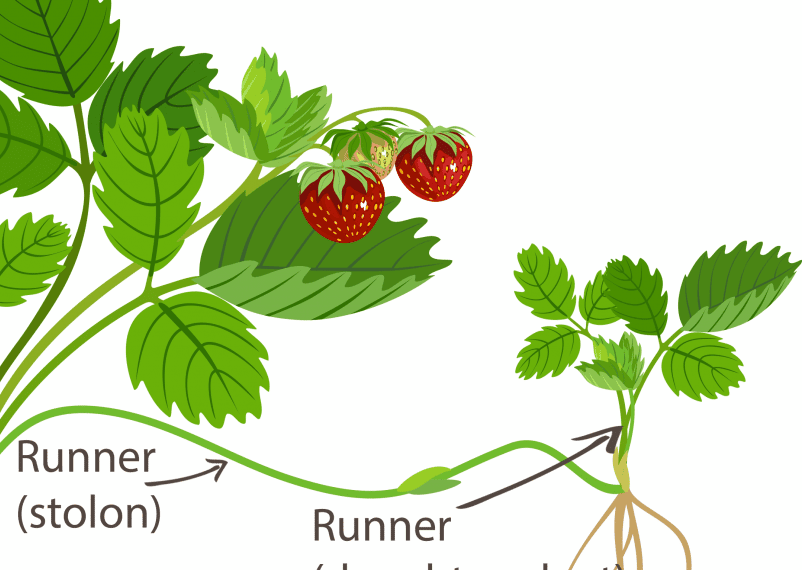
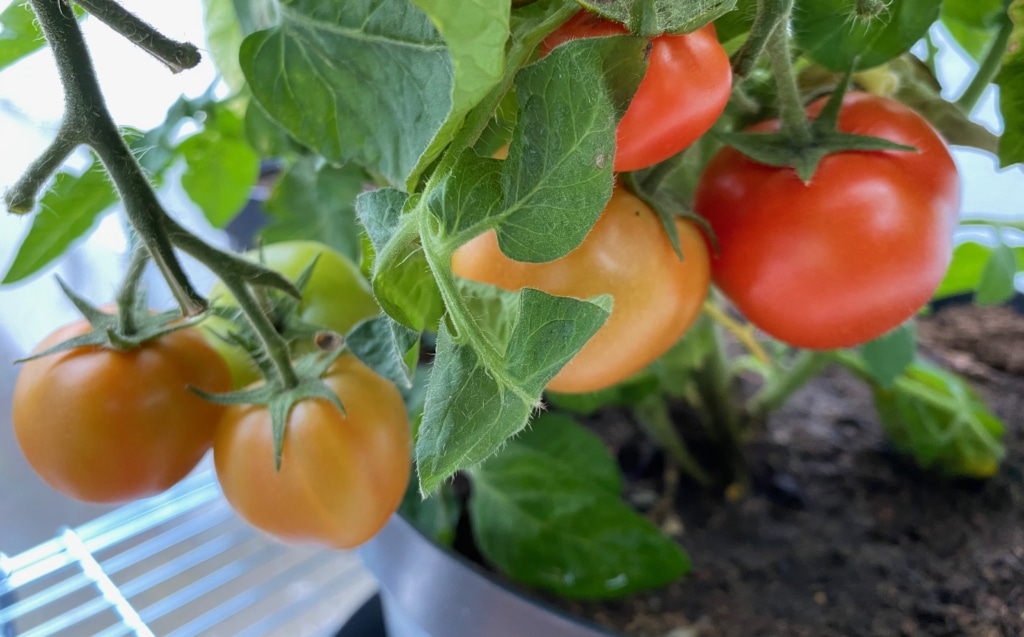
Suckers need to be cut off the tomato plants. Suckers what thee… I thought when I heard of it the first time. Tomato suckers are small shoots, or leaves, that sprout out in the V where the stem and the branch of a tomato plant meet. They are harmless but can draw energy away from the main stems, decreasing tomato growth. I don’t have a photo of them either, but you can use aunt Google to see what I mean. Same goes with cucumber plants. Another important thing about growing tomatoes is regularity when it comes to watering. If you normally water them every three days, stick to that. If you’d suddenly water them after 2 or 4 days they might become unhappy. In warmer countries I’m sure they’ll have to be watered more frequently, but they absolutely love routine.
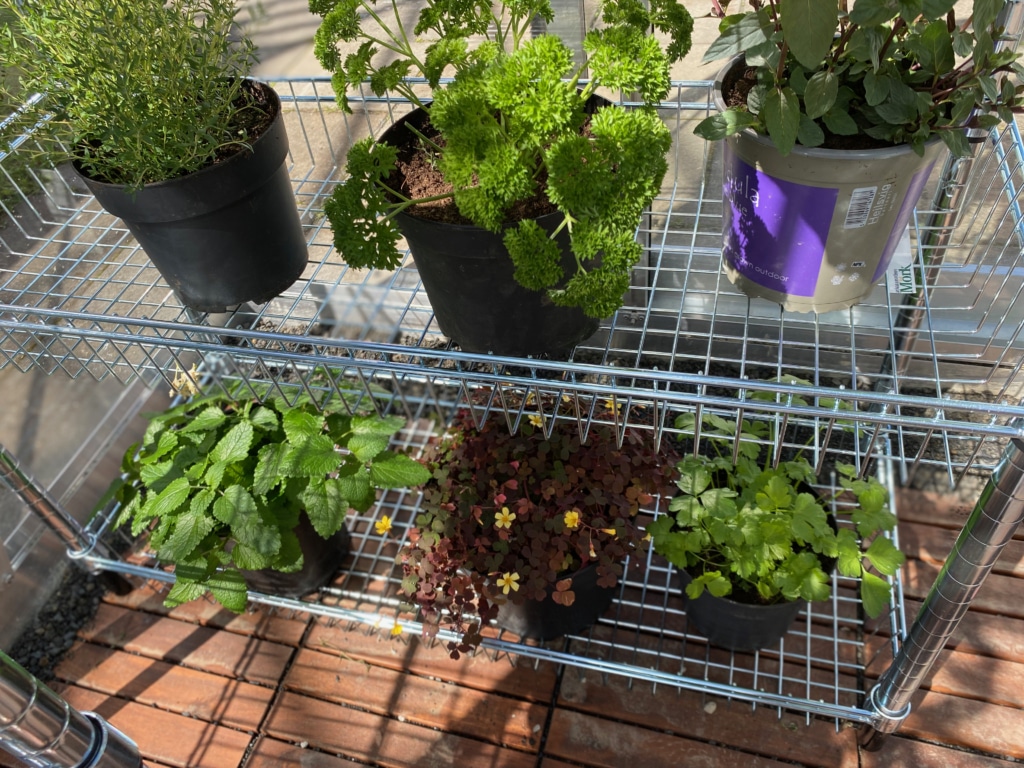
I use herbs in my cooking pretty much every day so next year I’m going to grow even more.
A few extra pointers:
Size of plant pots:
I decided on having no raised beds in my greenhouse so size of pots was very important. I learned they can’t be too big. I should’ve planted the tomatoes, cucumbers, courgette and specially the runner beans in larger pots. They need to grow up in smaller pots at first of course, but after that it would have been better to plant them in huge pots. Runner beans and Sugar snaps can be planted directly into huge ones. Good to know next year.
Ventilation and powdery mildew:
Fresh air is extremely important in greenhouses. Not only to prevent the house to become burning hot – which is seldom a problem here in Iceland – but also to prevent the cold humidity which is bad for the plants. I don’t have a ventilation system in my greenhouse but made sure to keep the door and window open during the day. That wasn’t enough to prevent my plants from becoming stressed in the cold humidity and be plagued by powdery mildew. I had to cut off the affected leaves and branches every day, sometimes twice per day. By doing that I prevented it from spreading and affect the growth.
Aphids
The only way not to get aphids is by not being a gardener – a friend told me. That’s correct. One morning my roses were covered in aphids and I got tears in my eyes. I managed to control them by giving them soap baths, you can read about it HERE. It’s a lot of work and as soon as I heard about organic pesticides I decided to try that. It worked wonders and I’ll definitely use it next summer.
Love
I’m convinced my plants love company and appreciate when I talk to them and sing. I’ve got no scientific documents to proof my point. Nevertheless I’m pretty sure it’s what made my attempt to grow flowers and veggies successful, despite lack of experience, not to mention horrible weather conditions.
Autumn chores are pretty much done. Wrapping the fruit trees, covering up fragile plants and planting bulbs that hopefully will grow to be beautiful flowers next spring. I’ve ordered a very special garlic and will plant it as soon as it arrives.
There’s a lot more to be learned and I’m sure I’ve forgotten to mention many things. But even if it’s nippy outside right now, and the winter will be long and strong, I’m already looking a lot forward to growing from seeds next spring 🙂